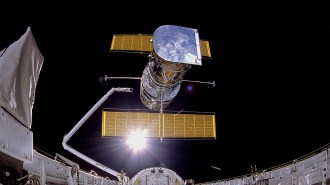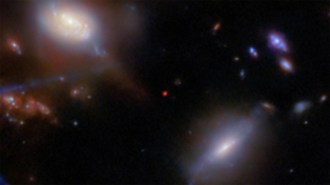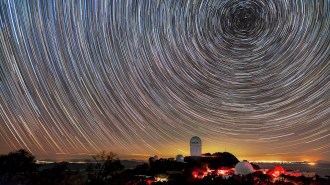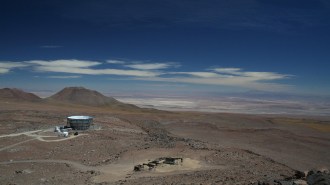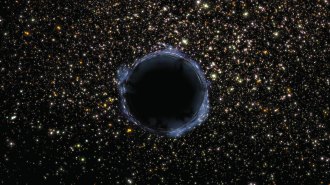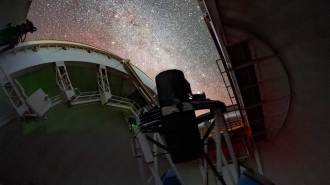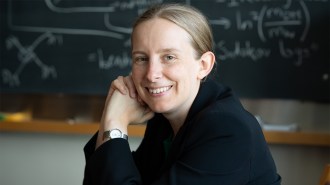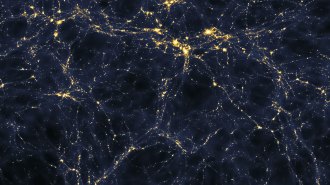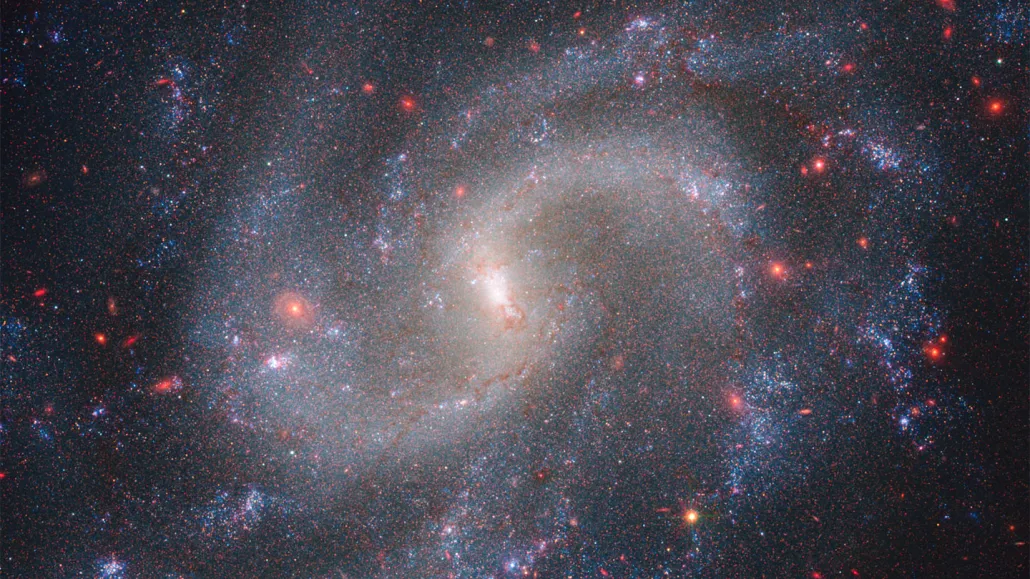
Pulsating stars that reveal the motion of this spiral galaxy 75 million light-years away (called NGC 5584) and other galaxies suggest the universe is expanding faster than astronomers’ leading theory of the universe says it should.
Adam G. Riess/JHU, STScI, NASA, ESA, CSA
- More than 2 years ago
The greatest puzzle in cosmology just got even more puzzling.
Images from the James Webb Space Telescope have confirmed that the universe appears to be expanding significantly faster than it should be, researchers report in a study accepted in the Astrophysical Journal. The observation is in conflict with an esteemed theory, the standard model of cosmology, that describes how the universe has evolved since the first moments after the Big Bang.
The conflict comes down to calculations of the Hubble constant, a number that describes how fast everything in the universe is flying apart. One calculation, based on Planck satellite observations of the oldest light in the universe in conjunction with the standard model of cosmology, suggests the Hubble constant is 67.4 kilometers per second per megaparsec (a megaparsec is about 3 million light-years). Hubble Space Telescope images of stars at various distances from us provide a fundamentally incompatible value — 73 kilometers per second per megaparsec.
The discrepancy is known as the Hubble tension, and new JWST data hasn’t done anything to ease it (SN: 7/30/19). The telescope took images of the same stars as the Hubble telescope and calculated a very similar Hubble constant. Although the Planck number disagrees from the Hubble telescope and JWST number by less than 10 percent, the discrepancy in the measurements implies that there’s something terribly wrong with our understanding of the universe. Unless an error turns up in one of the measurements, it will take strange new physics to explain the tension.
“Papers in the literature over the last 10 years have invoked anything from weird dark matter to weird dark energy, to another [exotic] particle, to a magnetic field in the early universe to a new field, all kinds of things” to explain the Hubble tension, says cosmologist Adam Riess of Johns Hopkins University.
Some of these explanations “look semi-successful, some of them look like failures, some of them would cause other problems,” he says. Developing a theory that might resolve the tension “is still very much in the skunkworks [or extremely speculative] stage of trying to understand what [the tension] could mean.”
JWST looks to the stars to calculate the Hubble constant
With the Hubble telescope and JWST, astronomers calculate the Hubble constant by observing flashing stars known as Cepheid variables. The stars flare up periodically at rates that indicate how much light they’re putting out. Comparing a star’s brightness in telescope images with its expected brightness, based on the flare-up rates, gives a measure of the distance to the stars. Shifts in the color of the light coming from the stars reveal how fast they’re moving. Combining distance and speed observations of Cepheid stars leads to a measure of the expansion of the universe.
But Cepheid variable stars tend to sit deep inside galaxies, surrounded by crowds of other stars. That can make it difficult to get good measurements of the Cepheids’ speeds and locations. One simple resolution for the Hubble tension could have been that the Hubble telescope measurements were simply off.
Enter JWST, which can peer through the stellar crowds to clearly make out the color and brightness of Cepheid variables. The higher-resolution JWST images provide data with dramatically lower uncertainties and reduced confusion with nearby stars than the Hubble telescope could manage. The result: The Hubble telescope measurements have been right all along, Riess and colleagues report in their new paper.
This study alone isn’t enough to convince astronomer Wendy Freedman of the University of Chicago. The two galaxies studied are comparatively close to us, on cosmic scales, with the farthest one about 75 million light-years away, she notes. The relative proximity makes it easier to pick out the Cepheids from the stellar crowds. Freedman suspects it will be harder to distinguish Cepheids from the crowds of surrounding stars in more distant galaxies, even with JWST.
“The problem is only going to be worse,” Freedman says. “Because the resolution, it gets worse as you go to a higher distance.” For very distant galaxies, she suspects, stars could appear too close together to pick out the Cepheids from neighboring stars, even for JWST. As a result, Freedman says that Riess’ confirmation of the higher Hubble constant may crumble with analysis of more distant Cepheids.
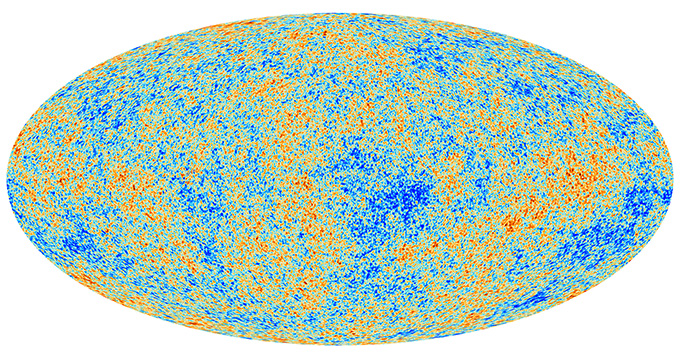
JWST’s images leave the Hubble tension untouched
Hints that the measurements might hold up at larger distances arose in a Sept. 12 presentation at a conference in Baltimore dedicated to the first year of JWST science. Riess showed preliminary Cepheid data from four more galaxies. One of them is 140 million light-years away — among the most distant galaxies in the Hubble telescope Cepheid studies. JWST data from those stars also line up with the Hubble telescope measurements. Although still awaiting peer review, the images strongly suggest that the JWST has indeed overcome the uncertainties that resulted when light from Cepheids got mixed up with light from nearby stars in the lower resolution Hubble telescope images.
University of Cambridge astrophysicist George Efstathiou, who was not involved in the study, is both convinced that Riess has gotten the measurements right and confounded by the implications. “When they showed me all of that [data],” Efstathiou says, “my reaction was, ‘Well, you know, I’m stumped.’”
Efstathiou is a member of the Planck satellite collaboration, which studied the oldest light in the universe, called the cosmic microwave background, and found the lower value for the expansion of the universe. The satellite’s calculation is based on images of the patterns in light from the early universe. Together with the standard model of cosmology, the images show that the universe is expanding with a Hubble constant that’s lower than the JWST measurement by about 5.6 kilometers per second per megaparsec.
As it stands, there doesn’t seem to be anything wrong with the Planck measurement of the Hubble constant or with the JWST observations. The tension between the measurements points a finger at the standard model of cosmology as the problem. But the standard model also appears to be unimpeachable; it’s withstood numerous other challenges without breaking down. The model came about in part due to the discovery of the accelerating expansion of the universe, which earned Riess and others a Nobel Prize in physics (SN: 10/4/11). The revelation was a key piece in shaping the model to include dark matter, dark energy and other factors, making it the simplest theory that can accurately describe the universe.
Now, though, Riess’ Cepheid-based studies of the Hubble constant show that there’s still more to learn.
“This is a crack, or a surprise that doesn’t fit,” Riess says. “It’s left us more in a kind of confused or purgatory state.” The implication, he says, is “there’s a problem with the standard model. You can revise it, but we don’t know how to revise it, which direction or in what way.”
People shouldn’t mistake the tension over the Hubble tension as despair. “It’s more of an opportunity to learn something about the universe with these telescopes,” Riess says.
One possibility is completely new physics.
“If there’s new physics, that’d be fun,” Freedman says. “We’d all like to see something new and interesting…. Either way, I think it’s going to be an exciting result — either confirming the [standard] model or showing that there’s something still in the model that’s missing.”
